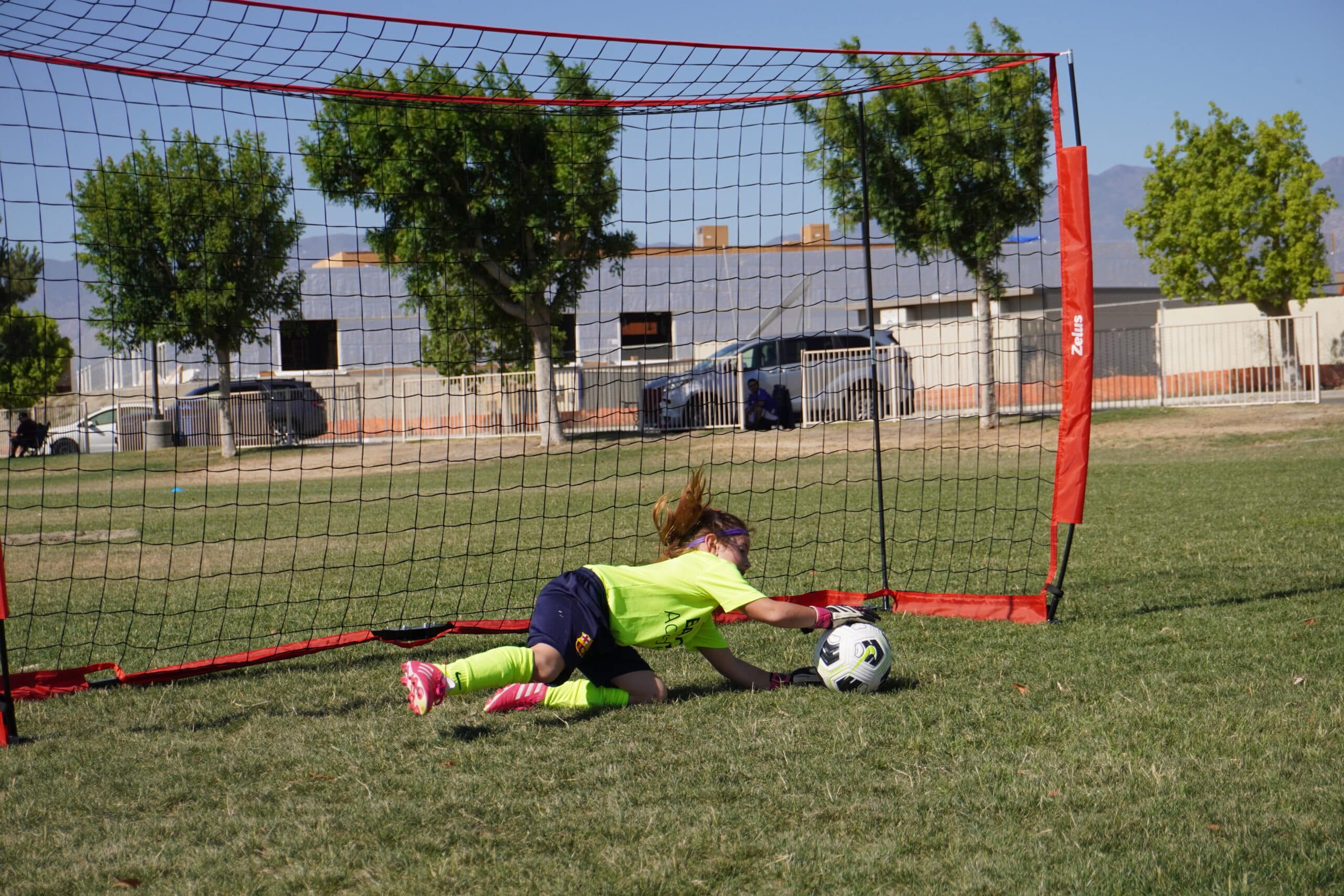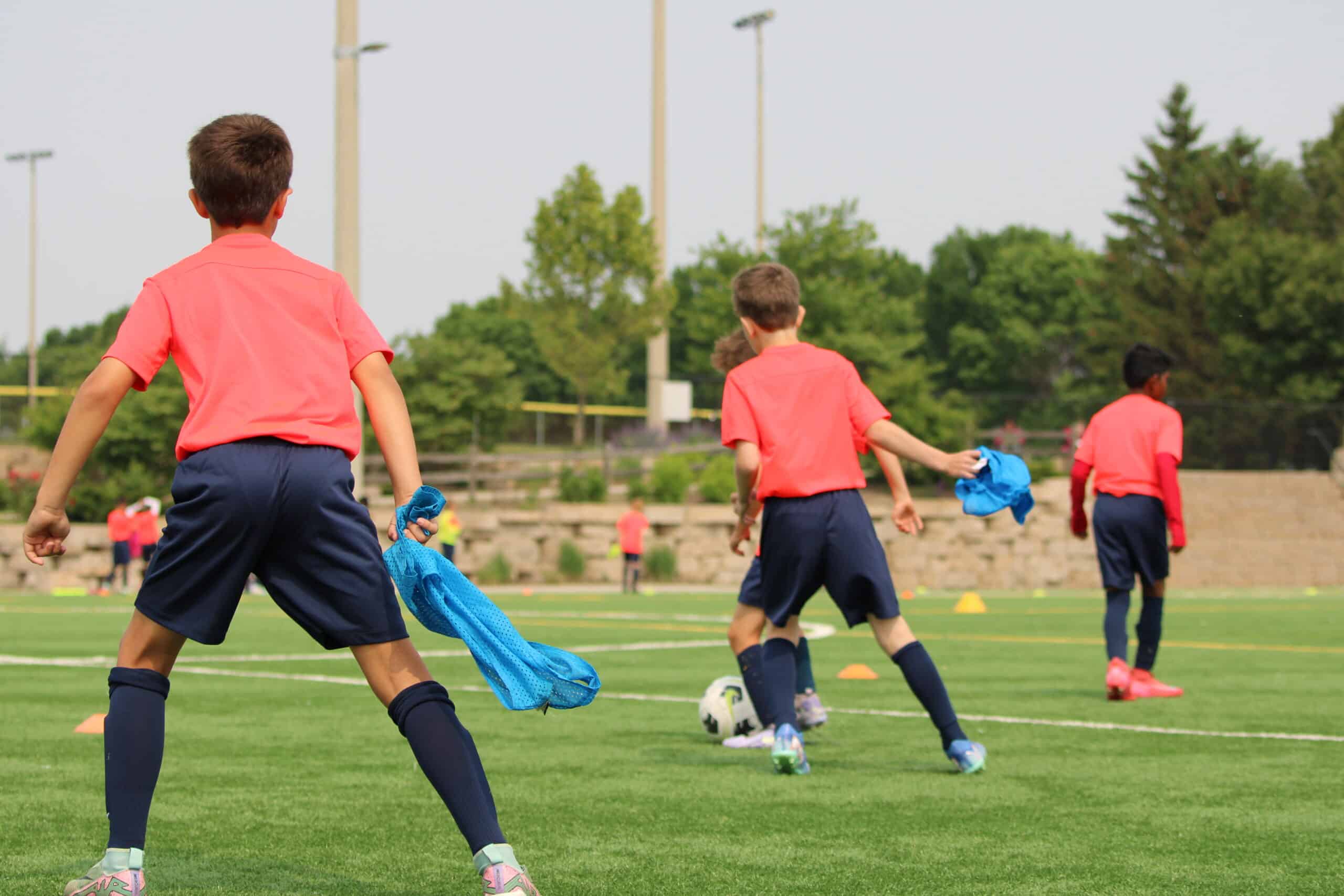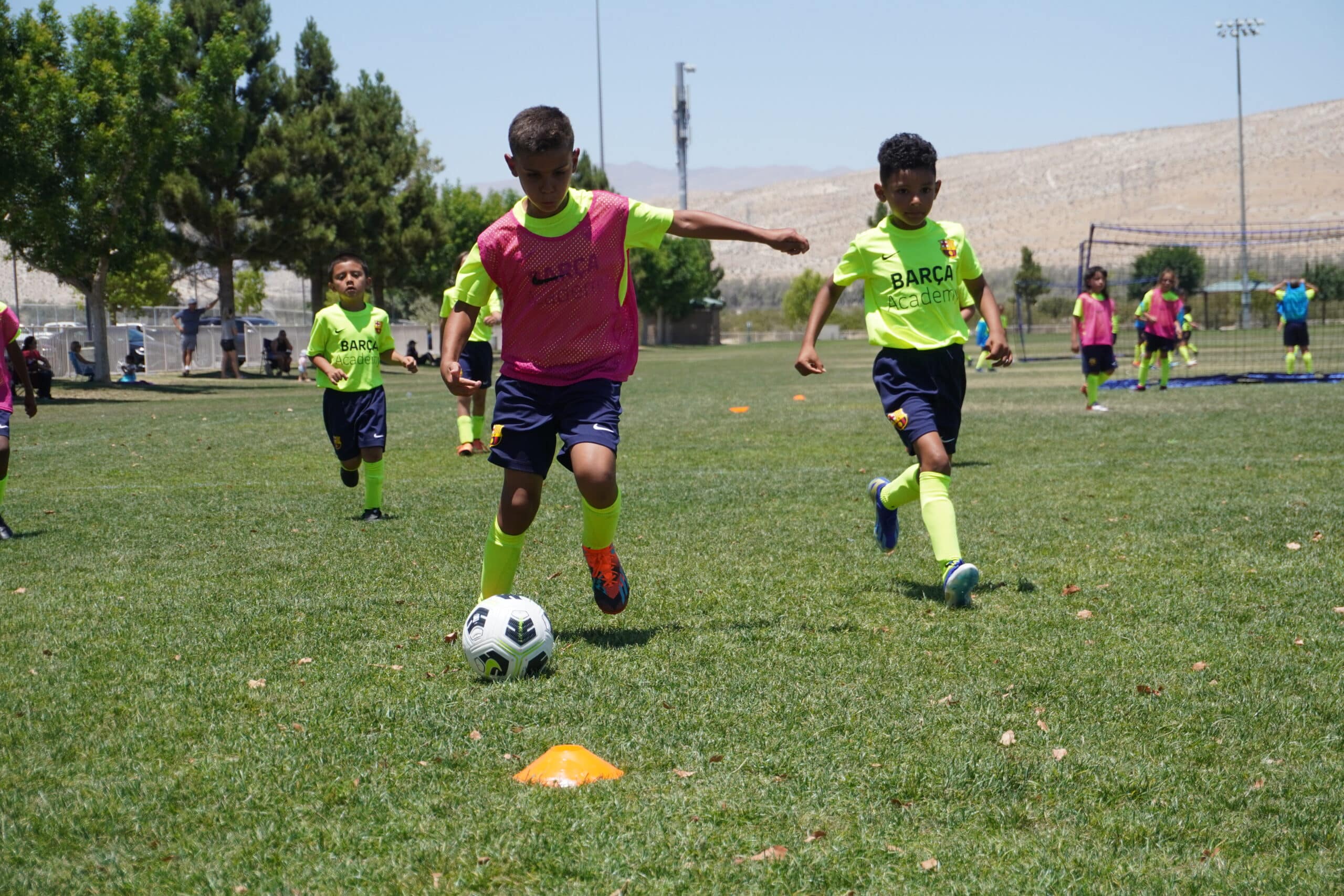Introduction to the Importance of Stretching in Soccer
When it comes to soccer, or any sport for that matter, the importance of stretching is often understated. Just as you wouldn’t start a car and immediately slam on the accelerator, you shouldn’t jump into a soccer match without properly warming up your muscles. Think of stretching as the key that unlocks your body’s full potential during a game of soccer.
Why is Stretching Important in Soccer?
Preparation is crucial for performance. Just as you prepare your mind to concentrate on the game, your body also needs its form of preparation – stretching. Stretching exercises help to warm up your muscles, increasing their flexibility, range of motion, and overall performance on the field.
Additionally, stretching reduces the risk of injury. When you stretch, you’re essentially preparing your muscles for the physical stress that soccer places on them. This preparation helps to prevent common soccer injuries like strains, sprains, and tears.
- Dynamic stretching is especially advantageous before a game as it involves moving parts of your body and gradually increasing reach, speed of movement, or both. It essentially primes your muscles for the intensive activity to come.
- Static stretching, on the other hand, involves stretching a specific muscle group to its maximum point and holding it for a period. It’s beneficial after a game to help cool down and maintain flexibility.
Improved Performance on the Field
An often-overlooked benefit of stretching is its positive impact on your performance during the game. A well-stretched player can run faster, jump higher, and has a broader range of movement. These benefits can give you a significant edge over your competitors who may have skipped their stretching routine.
Moreover, stretching can also improve your agility, which is a vital attribute in soccer. Your ability to change direction quickly, dodge opponents, and maintain balance can be significantly boosted by regular stretching.
The Long-Term Benefits
Lastly, consider the long-term benefits. Soccer players who make stretching a regular part of their routine are likely to enjoy a longer sporting career. It’s not just about the immediate benefits; consistent stretching can help to prevent the wear and tear that often comes with time, allowing you to maintain peak physical condition for longer.
A soccer player’s stretching routine should be as much a part of their training as dribbling or shooting practice. It’s an essential part of preparing for a game, improving performance, reducing the risk of injury, and ensuring a longer career. Understanding the importance of stretching in soccer is the first step to incorporating it into your training regimen.

Understanding the Benefits of Stretching for Soccer Players
So, why exactly is stretching so crucial for soccer players? You might be familiar with the quick stretch before a game or the cool-down stretches after. But, have you ever stopped to think about the multitude of benefits this practice offers? Well, let’s delve in!
Improved Performance
Right off the bat, stretching enhances performance. It prepares your body for the physical activity you’re about to engage in. When you stretch, you increase your body’s range of motion and flexibility, thereby allowing you to perform better on the soccer field. Flexibility is a key component in soccer as it aids in swift movements, kicking, and even prevents injury.
Injury Prevention
Speaking of injury, the prevention of muscle strains and pulls is another significant benefit of stretching. Soccer can put a lot of strain on muscles, especially if they are not adequately warmed up. Regular stretching keeps your muscles loose and prepared for any sudden movements you might need to make during the game, thus reducing the risk of injury.
Enhanced Blood Flow
What’s more, stretching improves circulation and blood flow to your muscles. This means that your muscles get the oxygen and nutrients they need faster, which can improve your endurance on the field. It also helps in faster recovery post-match or training.
Increased Energy Levels
Believe it or not, stretching can also boost your energy levels. When you stretch, you increase blood flow to your muscles – as mentioned earlier – but this also stimulates your nervous system, giving you an energy boost. So, consider those stretching exercises as your natural pre-game energy drink!
Reduced Muscle Soreness
Ever experienced that awful muscle soreness after a long soccer match? Stretching can help with that too! By increasing blood flow to your muscles, you speed up recovery and reduce muscle soreness.
Promotes Relaxation
Last but not least, let’s not forget about the mental benefits of stretching. Stretching encourages relaxation and helps reduce stress. It’s a great way to both start and end your day with a clear mind and a relaxed body.
In conclusion, stretching offers a treasure trove of benefits for soccer players. From improving flexibility and preventing injuries to boosting energy and promoting relaxation, it truly is an essential part of any soccer player’s routine. So, don’t forget to stretch before you step onto that field!
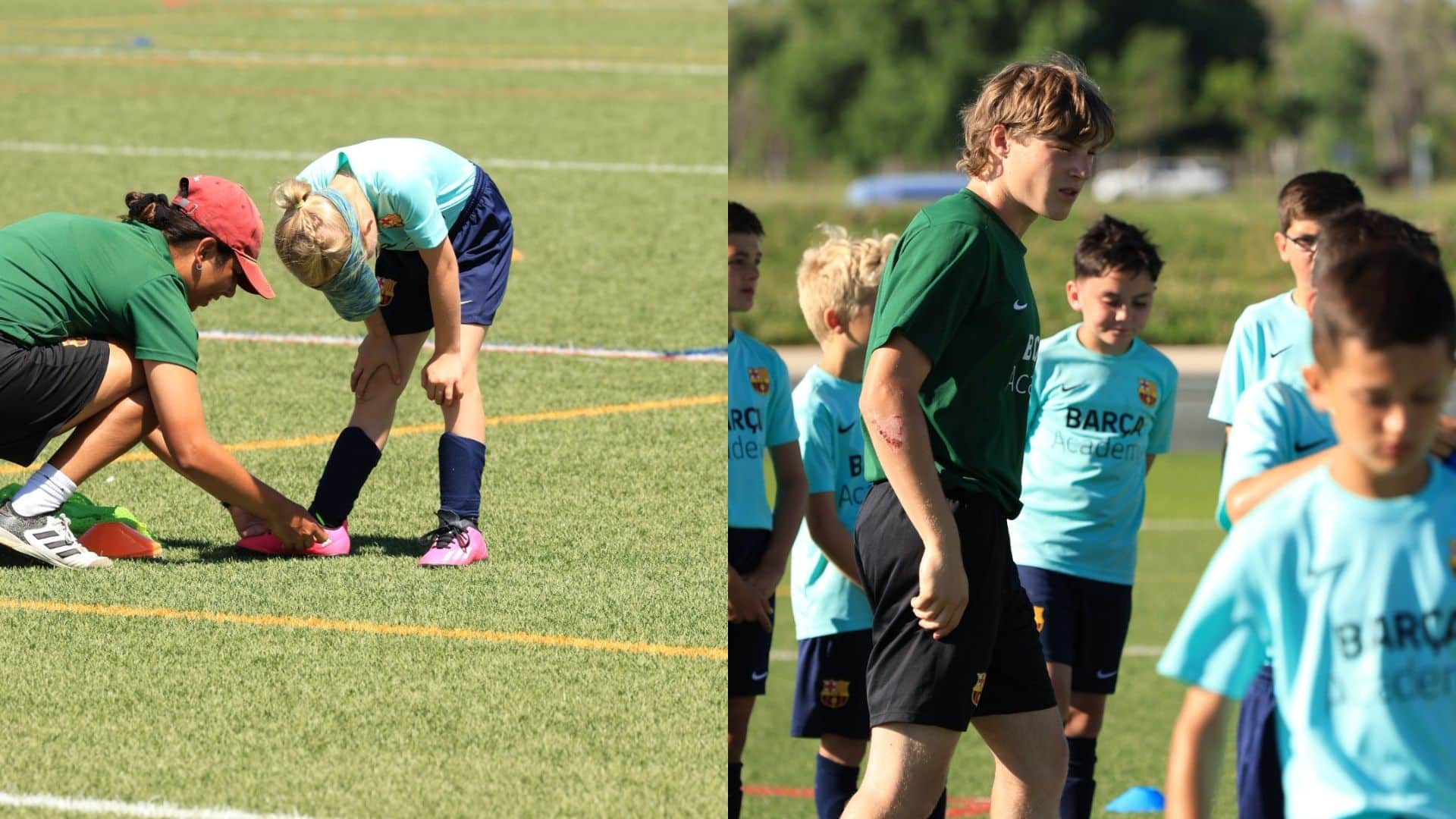
Top 10 Stretching Exercises Every Soccer Player Should Know
If you’re a soccer player, you probably already know that stretching is a critical part of your routine. It helps to increase flexibility, reduce the risk of injury, and boost your overall performance. Here are the top 10 stretching exercises that every soccer player should include in their training program.
1. Quad Stretch
Also known as the standing quadriceps stretch, this exercise targets the muscles at the front of your thigh. Stand tall, pull your foot behind you toward your buttocks, hold for about 30 seconds, and switch legs.
2. Hamstring Stretch
This stretch involves sitting with one leg extended and the other bent. Lean forward towards your extended leg while keeping your back straight, hold for up to 30 seconds, then switch legs.
3. Calf Stretch
Put your hands on a wall for support, extend one leg straight back while keeping your heel flat on the ground. Lean into the wall until you feel a stretch in your calf, hold for 30 seconds, then switch legs.
4. Groin Stretch
Sit on the ground with your feet together, knees bent out to the sides. Push your knees down with your elbows to stretch your inner thighs.
5. Hip Flexor Stretch
Kneel on one knee, with the other foot flat in front of you. Lean forward, stretching the hip of the back leg. Hold for 30 seconds, then switch legs.
6. Glute Stretch
While laying on your back, cross one ankle over the opposite knee and pull your thigh towards your chest to stretch your glutes.
7. Shoulder Stretch
Extend one arm across your chest, use the other arm to pull it closer to your chest. Hold for up to 30 seconds then switch arms.
8. Triceps Stretch
Lift one arm above your head, bend it at the elbow so that your hand is reaching towards the opposite shoulder blade. Use the other hand to push the elbow down. Hold for 30 seconds then switch arms.
9. Lower Back Stretch
Also known as Child’s Pose in yoga, this stretch targets your lower back. Sit back on your heels and stretch your arms out in front of you, lowering your forehead to the ground and hold.
10. Neck Stretch
Slowly tilt your head toward one shoulder, hold for 20 seconds, then tilt it towards the other shoulder and hold.
Note: Always remember to warm up your body before stretching to prevent injuries. Everyone’s body is different, so listen to yours and modify these stretches as needed.
By incorporating these stretching exercises into your routine, you can help ensure your body is prepared for the physical demands of soccer. Plus, who knows? With increased flexibility and less risk of injuries, you might even see an improvement in your game!

A Detailed Guide to Dynamic Stretching Exercises for Soccer Players
Welcome to your ultimate guide to dynamic stretching exercises specifically curated for the needs of soccer players. In case you’re wondering, dynamic stretching is a fantastic way to prepare your muscles and joints for the explosive movements that the beautiful game requires. It’s not just about limbering up; it’s about gearing your body for peak performance and reducing the risk of injury. Ready to kick-off? Let’s go, champ!
The Power of Dynamic Stretching
When you’re warming up for a soccer match or training session, dynamic stretching is your best friend. This form of stretching involves active movements where joints and muscles go through a full range of motion, helping you to increase your muscle temperature, enhance your flexibility, and even improve your game-time speed and agility!
Dynamic Stretching Exercises Tailored for Soccer Players
Now that you understand the benefits, let’s dive into the top dynamic stretching exercises that every soccer player should incorporate into their warm-up routine.
- Leg Swings: Stand upright and swing one leg back and forth in a controlled manner. It’s a great exercise to open up the hips and prep the hamstring muscles.
- Walking Lunges: Take a big step forward with one foot and lower your body into a lunge position. Push off with your front foot and bring the back foot forward into the next lunge. This movement helps to warm up the hip flexors, quads, and glutes.
- High Knees: Stand tall and march in place while lifting your knees as high as possible. High knees mimic the running motion, priming your leg muscles for action.
- Butt Kicks: Jog in place while kicking your heels towards your glutes. This warms up your quads and increases the mobility of your hip flexors.
- Arm Circles: Extend your arms to your sides and make circular movements, first in a forward direction, then backwards. This helps to loosen up your shoulder joints.
Expert Tips for Dynamic Stretching
As you perform these dynamic stretches, always remember to stay mindful of your body. Don’t rush through the movements, and ensure you’re executing them with proper form. This not only increases their effectiveness but also minimizes any potential risk of injury.
Another crucial point to remember is to tailor your stretching routine to your individual needs. As Dr. David Geier, former director of sports medicine at the Medical University of South Carolina, points out, “If you have specific tight areas, or previous injury spots, spend extra time stretching those.”
So there you have it – a detailed guide to dynamic stretching for soccer players. Remember, champions are not just born on the field, but also in the preparation. Make dynamic stretching a crucial part of your warmup, and you’ll be on your way to becoming a stronger, faster, and more agile soccer player.

How Static Stretching Contributes to Soccer Performance
While we often talk about dynamic stretching for soccer players, it’s equally important not to overlook the value of static stretching. This type of stretching involves holding a specific position for a certain period, typically around 30 seconds. It plays a crucial role in enhancing a soccer player’s performance on the field. Let’s delve into the benefits and some basic static stretches you can incorporate into your routine.
The Value of Static Stretching in Soccer
Static stretching does not involve movement, and it’s a great way to increase flexibility and relax tense muscles. These stretches are typically performed after a workout or game to help muscles recover. They lower the pulse rate and promote the body’s relaxation, which can boost a soccer player’s recovery process.
It’s also worth noting that static stretches can improve soccer players’ flexibility, which is particularly beneficial when trying to avoid injuries. Regular stretching can help to increase the length and flexibility of muscles over time, allowing mobility and range of movement to improve. This can, in turn, lead to better performance and less risk of injury on the soccer field.
Effective Static Stretches for Soccer Players
There are numerous static stretches that can be beneficial for soccer players. Here are a few examples:
- Hamstring stretch: Sit down and extend one leg out in front of you while bending the other so your foot is touching your thigh. Lean forward and try to touch the toes of your extended leg. Repeat with the other leg.
- Quadriceps stretch: While standing, bend one knee and grab your ankle, pulling your heel towards your buttock. Repeat with the other leg.
- Calf stretch: Lean against a wall with one leg extended behind you and the other bent in front. Push your hips forward while keeping your back heel on the ground. Repeat with the other leg.
These static stretches can help to improve flexibility in the muscles most used in soccer, and incorporating them into your routine can be incredibly beneficial.
When to Do Static Stretches
It’s recommended to perform static stretches after a workout, training session, or game rather than before. This is because static stretches can relax the muscles and decrease their power and strength temporarily, which is not ideal before vigorous activity. However, doing these stretches after the activity helps to promote recovery and relaxation.
With these insights, you can see the value of static stretching in soccer. The next time you finish a hard training session or match, take a few minutes to cool down and stretch out – your muscles will thank you!
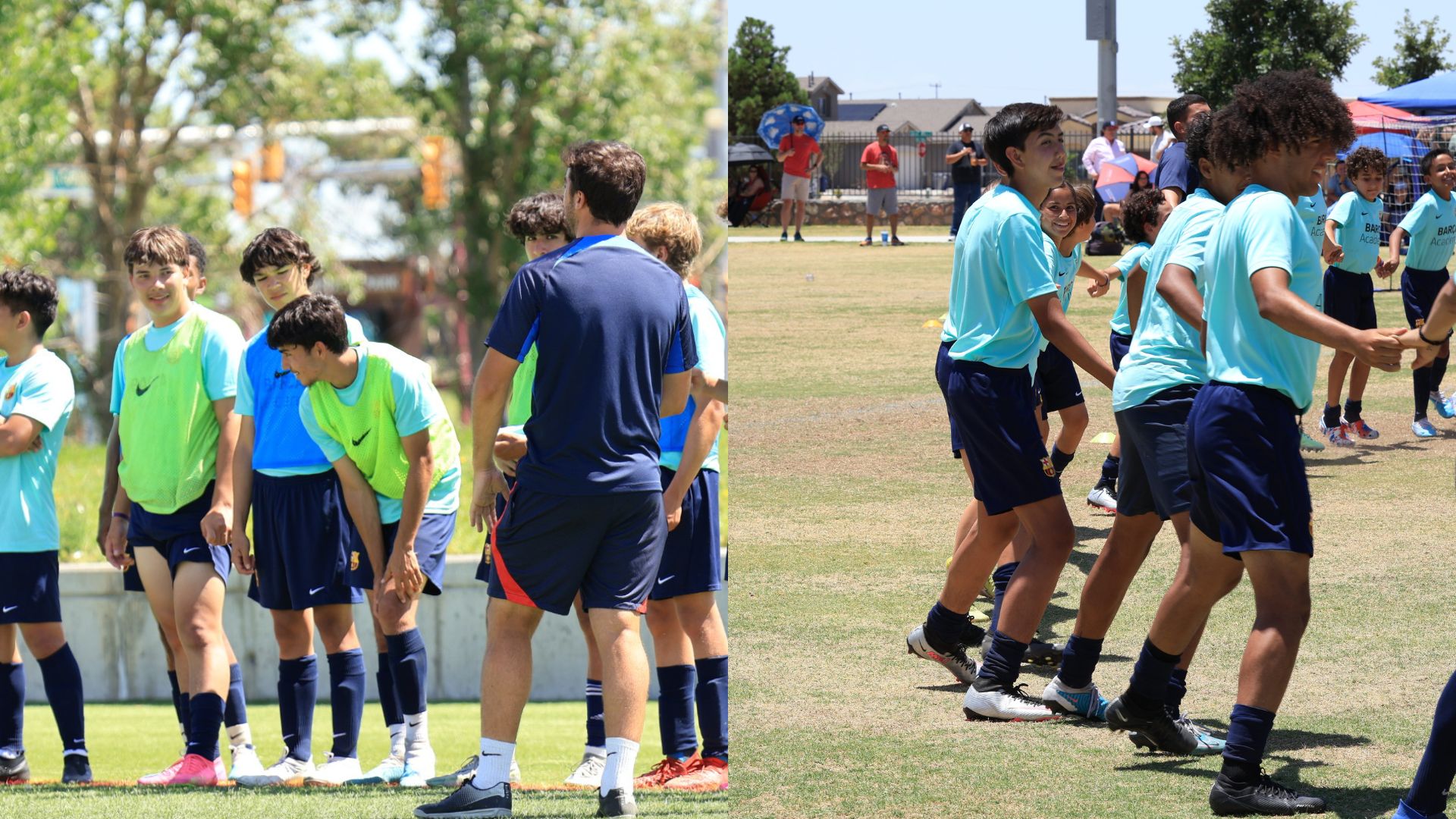
Incorporating Yoga and Pilates in Soccer Stretching Routines
Speaking of improving flexibility and core strength of soccer players, yoga and pilates are two incredible practices that should not be overlooked. Apart from the traditional static and dynamic stretching exercises, these two methods can help enhance your performance on the field in a big way. Let’s dive deeper and find out how!
Yoga for Soccer Players
Ever heard of a soccer player doing Downward Dog or the Warrior Pose? If not, you’re in for a surprise. Yoga isn’t just for those who love serenity and calm, it’s for anyone aiming to improve their body’s flexibility, balance, and strength. Now, isn’t that exactly what a soccer player needs?
Incorporating yoga into your soccer training routine can help you gain more control over your body, especially in high pressure moments during the game. Here are a few poses to get you started:
- Downward Dog: This classic yoga pose is excellent for stretching your hamstrings, calves, and spine, while also strengthening arms and shoulders.
- Warrior Pose: Warrior pose can help increase stamina and balance, while also strengthening your legs and core.
- Bridge Pose: This pose is fantastic for building strength in your glutes and hamstrings, which are essential for those powerful sprints on the field.
Pilates for Soccer Players
Much like yoga, Pilates is another fantastic method for soccer players to enhance their flexibility and strength. Even more, it focuses on the core, which is vital for stability and balance when you’re on a mission to score that goal.
Unlike general fitness workouts, Pilates exercises are low impact and focus on controlled movements. This way, you’re not only exercising but also learning to control your body better, which can benefit your game significantly. Here are a few pilates exercises you can try:
- The Hundred: This exercise is a core burner and can help improve your stability on the field.
- Scissors: This move stretches your hamstrings while challenging your core stability, perfect for a soccer player.
- Pilates Roll Up: Move over traditional sit-ups, the Pilates Roll Up is a gentle yet effective way to strengthen your abs and spine while promoting spinal flexibility.
Remember, the key to successfully incorporating yoga and pilates into your soccer routine is consistency. Start slow, maybe twice a week, and gradually increase your practice. Soon, you’ll notice better flexibility, improved balance, and a stronger core, which can significantly refine your performance on the field.
Yoga and Pilates for soccer players may not be the most conventional methods for enhancing performance, but their results are undeniable. Give them a try, and you might just find your secret weapon to being a better soccer player!

Frequently Asked Questions about Stretching for Soccer Players
As we conclude our in-depth exploration of the importance of stretching in soccer, let’s tackle some of the frequently asked questions that we often encounter. Below, you’ll find our expert responses to these questions. It’s our hope that these answers will provide you with the knowledge you need to effectively incorporate stretching into your soccer routines.
1. How often should soccer players stretch?
Generally, soccer players should aim to stretch daily, particularly on days when they have training or games. It’s important to engage in both dynamic stretching before games and practices, and static stretching post-workout to aid recovery.
2. Why is stretching important in soccer?
Stretching is crucial in soccer for a variety of reasons. It boosts flexibility, increases the range of motion, reduces muscle tension, and aids in injury prevention. Furthermore, it can enhance performance by preparing the muscles for the physical demands of the game.
3. Should soccer players stretch before or after playing?
Soccer players should stretch both before and after playing. Dynamic stretches are ideal before playing to warm up the muscles and prepare them for action. After playing, static stretches can help cool down the body, promote muscle recovery and reduce post-workout stiffness.
4. Can stretching improve speed and agility in soccer?
Absolutely! Stretching can improve both your speed and agility on the soccer field. By increasing your flexibility and range of motion, it allows for greater freedom of movement and more efficient execution of soccer-related skills.
5. Is yoga or Pilates beneficial for soccer players?
Yes, both yoga and Pilates can be extremely beneficial to soccer players. They can enhance flexibility, balance, and core strength, all of which are crucial factors in soccer performance. They also encourage mindfulness and concentration, which can be beneficial during a game.
Remember, every soccer player is different, so it’s essential to listen to your body and tailor your stretching routine to your individual needs. Don’t rush the process, and always ensure you’re using the correct technique to get the most from your stretches. Here’s to better flexibility, reduced injury risk, and improved performance on the soccer field!






